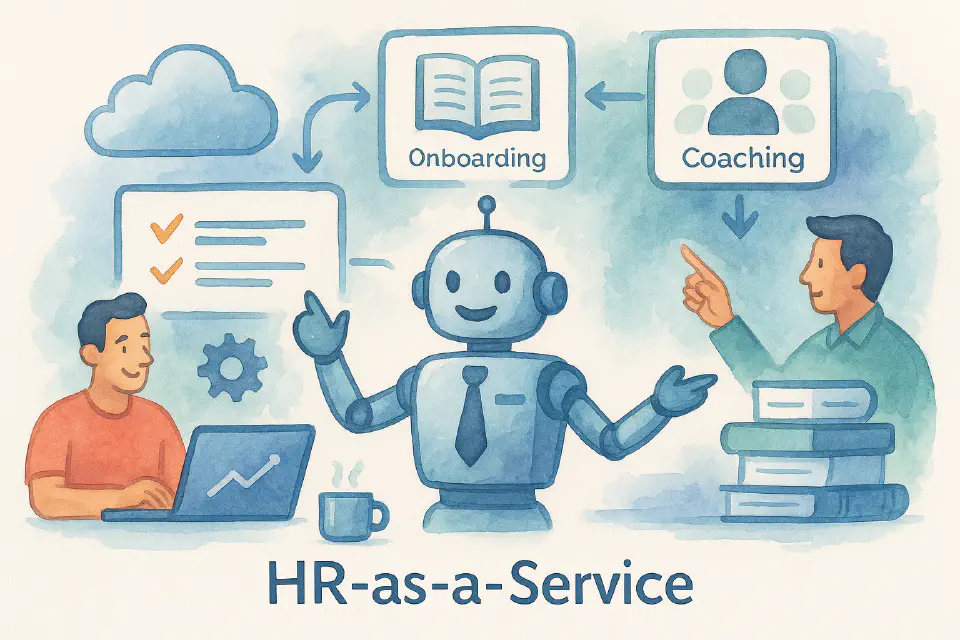
Platform-Based HR (HR-as-a-Service)
HR isn’t a department—it’s a platform. This model lets teams plug into HR services when they need them, in the way that suits them best.
In many organizations, HR is still seen as a fixed-function provider—with predefined services, slow response times, and top-down control. But this model is breaking under the pressure of speed, scale, and personalization.
Enter: Platform-Based HR—a model where HR acts like a service ecosystem, offering modular, plug-and-play solutions that different parts of the business can access and tailor.
Core Principles
The HR platform model is built around three core ideas:
- Modularity – Services are broken into clear components (e.g. performance reviews, coaching, onboarding) that can be used independently or bundled.
- Self-service + API access – Employees, managers, and systems can interact directly with HR services without bottlenecks.
- Continuous improvement – HR services are treated as products with life cycles, user feedback, and analytics-driven updates.
This enables scalability, flexibility, and personalization at once.
Platform vs Traditional HR
| Traditional HR | Platform-Based HR | |
|---|---|---|
| Structure | Functional / vertical | Modular / service-based |
| Access | Request-driven | On-demand / self-service |
| Updates | Periodic / manual | Iterative / continuous |
| Ownership | Centralized | Federated or shared |
This doesn’t mean HR disappears—it becomes more invisible but embedded, with better outcomes and greater reach.
Technology as Enabler
The platform model is only possible with the right tech stack:
- Cloud-based HRIS with modular architecture
- Process orchestration tools (e.g. ServiceNow, Workato)
- Integration layers / APIs
- Employee Experience (EX) platforms with front-end UX focus
Governance in Platform HR
Platform models still need structure. Key considerations:
- Product owners responsible for each service module
- Service level agreements (SLAs) to ensure reliability
- Usage analytics to track adoption and improvement
- Clear taxonomy to avoid fragmentation
Governance moves from approvals to enablement and quality assurance.
Where It Works Best
Platform HR fits:
- Large or fast-scaling organizations
- Companies with federated or decentralized structures
- Businesses embracing hybrid work, gig models, or internal talent marketplaces
It’s especially powerful where reusability and user customization are valued.
Link to Other Models
Platform-based HR often builds on:
- Agile structures for product ownership
- Digital foundations (next-gen HRIS, workflow engines)
- Design thinking for user-centric service design
It’s not a silver bullet—but it offers a path to scalable, adaptive HR that’s responsive to today’s dynamic organizations.
The Future: HR as an Ecosystem
HR is no longer the sole provider of people solutions. In a platform model, partners, managers, external experts, and AI agents may all contribute. The HR function becomes the orchestrator of value, ensuring quality, ethics, and coherence across a distributed service landscape.